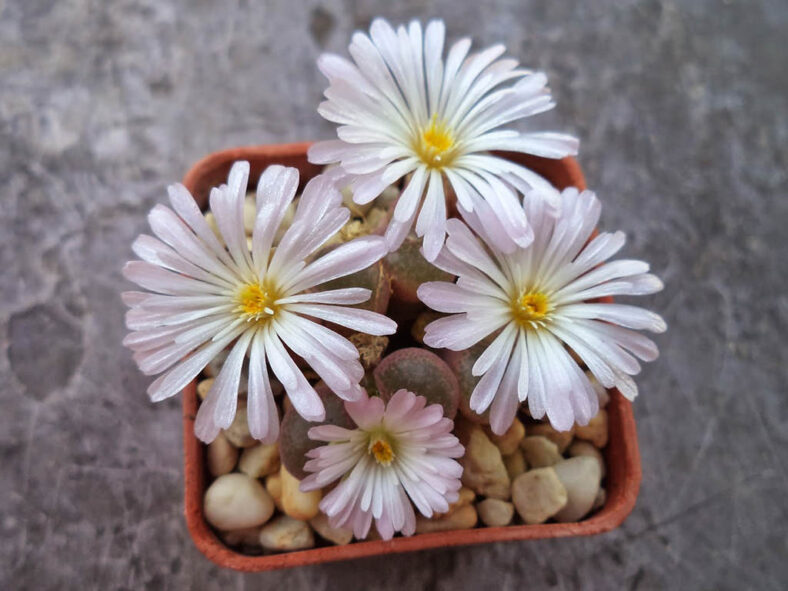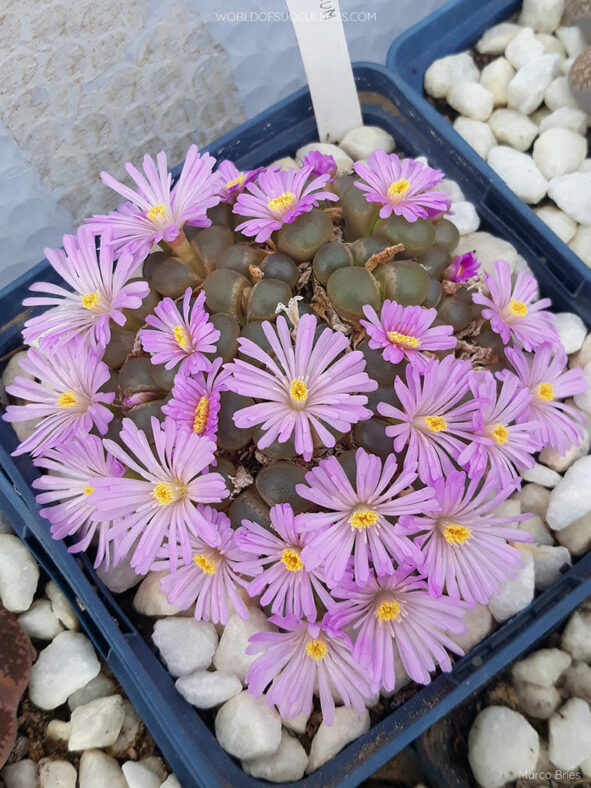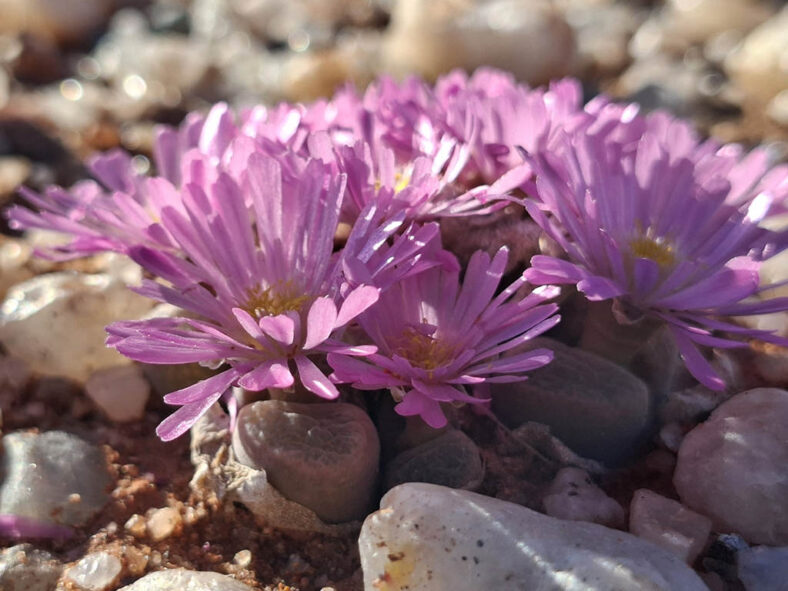Conophytum lydiae is a dwarf and low-maintenance succulent ideal for limited spaces and busy plant lovers. It is endemic to the Northern Cape province of South Africa.
Scientific Name
Conophytum lydiae (H.Jacobsen) G.D.Rowley
Synonym(s)
Ophthalmophyllum lydiae
Scientific Classification
Family: Aizoaceae
Subfamily: Ruschioideae
Tribe: Ruschieae
Genus: Conophytum
Etymology
The specific epithet "lydiae" (pronounced "LID-ee-ay") honors Lydia Triebner, wife of the German horticulturist and plant collector Wilhelm Triebner (1883-1957).
Origin
Conophytum lydiae is native to South Africa. It grows on quartzite flats or low slopes in areas such as Concordia, Smorenskadu, and Kangnas, located on the margins of Bushmanland in the Northern Cape province.
Description
Conophytum lydiae, also known as Ophthalmophyllum lydiae, is a beautiful dwarf succulent with bilobed bodies that consist of a pair of thick, fleshy leaves. It can grow solitary or in small clusters that can reach a diameter of up to 2 inches (5 cm). The bodies are cylindrical to urn-shaped and have windowed, truncated to convex tips of the lobes, which are usually short and not gaping. They can grow up to 1.2 inches (3 cm) tall and 0.8 inches (2 cm) in diameter. The coloration of the bodies ranges from purplish-green to brown or green, either dull or shiny, and they are often richly reddened on the sides.
During the fall, Conophytum lydiae produces fragrant flowers with petals that can be white with pink tips, solidly pink, or entirely white. The flowers open during the daytime. The resulting fruits are pale brown capsules with six locules, each with numerous tiny seeds.

How to Grow and Care for Conophytum lydiae
Light: This plant thrives in bright light but should be protected from intense direct sunlight. To avoid sunburn, place it in an area where it can receive a few hours of full sun during the cooler parts of the day.
Soil: For optimum growth, Conophytum lydiae requires porous soil that allows water to drain away quickly. You can use a commercial potting mix designed for succulents or make your own.
Temperature: This plant can tolerate high temperatures but is not frost-hardy. It is hardy in USDA Plant Hardiness Zones 10b-11b, which have average annual extreme minimum winter temperatures ranging from 35°F to 50°F (1.7°C to 10°C).
Watering: Conophytum lydiae requires little to no water during its dormancy from spring to summer. When it begins to grow again in the fall, it is safe to water it deeply. However, ensure that the soil dries out between waterings. If the leaves begin to wrinkle during the active growth, it may indicate that the plant needs additional water.
Fertilizing: This plant is a light feeder and does not need fertilizer if repotted every two years.
Repotting: The best time to repot this plant is at the beginning of the growing season, but it can also be done at any point during active growth.
Propagation: Conophytum lydiae is usually propagated from seeds, but can be easily propagated by division. The ideal time to divide the plant is before it starts to break dormancy or after flowering.
Learn more at How to Grow and Care for Conophytum.
Toxicity of Conophytum lydiae
Conophytum lydiae is considered non-toxic, so growing around children and pets is safe.
Links
- Back to genus Conophytum
- Succupedia: Browse succulents by Scientific Name, Common Name, Genus, Family, USDA Hardiness Zone, Origin, or cacti by Genus
Photo Gallery
Click on a photo to see a larger version.


